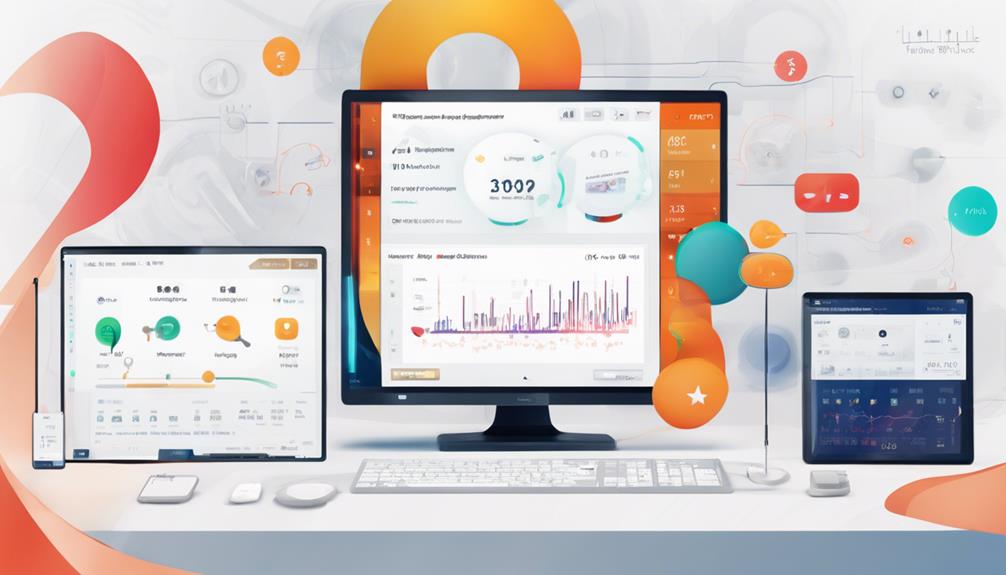If you're looking for the best Vietnamese speech-to-text tools in 2024, you're in luck. These technologies are designed to convert spoken language into accurate text, making transcription faster and more efficient. Google Speech-to-Text and Vtranscript stand out for their high accuracy, handling of dialects, and seamless integration capabilities. Features like real-time transcription, intuitive interfaces, and strong editing options enhance user experience. Pricing models vary, so you can choose what fits your needs best. As the tech evolves, you'll find exciting updates that could change how you approach transcription tasks. Discover what's next for Vietnamese transcription tools!
Key Takeaways
- Google Speech-to-Text offers robust support for Vietnamese accents and dialects, ensuring high accuracy in transcription.
- Vbee specializes in recognizing Vietnamese language nuances and colloquialisms, making it ideal for local users.
- Otter.ai provides decent transcription for casual tasks, though premium options may yield higher accuracy.
- Tools like Descript and Trint enhance user experience with intuitive editing features for refined transcripts.
Overview of Speech-to-Text Technology

Speech-to-text technology converts spoken language into written text, making it easier for you to capture and transcribe conversations in real-time. This technology uses a combination of algorithms, machine learning, and natural language processing to identify and interpret speech patterns. By analyzing audio input, it recognizes words and phrases, transforming them into accurate text output.
You'll find that speech-to-text solutions can support various languages, including Vietnamese, which is crucial for effective communication in diverse settings. This technology can be particularly valuable in business meetings, lectures, and interviews, where recording and transcribing information quickly is essential.
As you explore this field, you should consider factors like accuracy, speed, and user-friendliness. The effectiveness of speech-to-text technology can depend on the quality of the audio input, the speaker's accent, and background noise.
With advancements in artificial intelligence and deep learning, the capabilities of speech-to-text technology continue to improve. You can expect more efficient transcription processes and better integration with other tools, making this technology a vital asset in your daily communication and documentation tasks.
Top Automatic Transcription Tools
Many automatic transcription tools have emerged, making it easier than ever to convert spoken Vietnamese into written text efficiently. These tools can save you time and effort, whether you're a student, a business professional, or simply someone looking to transcribe audio for personal use.
One popular option is Google Speech-to-Text. It offers robust support for Vietnamese and integrates seamlessly with other Google services. If you're focused on accuracy and customization, consider using Otter.ai, which allows you to fine-tune your transcription settings for better results.
For those seeking a user-friendly interface, Descript is a fantastic choice. It combines transcription with editing features, letting you refine your text after the initial transcription. Additionally, Trint offers powerful collaboration tools, making it ideal for teams working together on projects.
Lastly, if you're looking for a budget-friendly option, Speechmatics provides affordable plans while still delivering impressive accuracy. With so many tools available, you can find one that suits your specific needs and start transforming your audio into text today. Explore these options and see which tool works best for your transcription tasks!
Key Features to Consider

When choosing an automatic transcription tool for Vietnamese, it's important to focus on key features that can enhance your transcription experience. First, consider accuracy. You'll want a tool that reliably recognizes Vietnamese words and phrases, especially with its various tones. Look for software that offers advanced speech recognition technology to ensure high precision.
Next, explore the tool's language support. A good transcription service should handle dialects and variations in Vietnamese, accommodating different accents and speech patterns. Additionally, ensure it can transcribe audio from various sources, like phone calls or videos.
Another crucial feature is real-time transcription. Tools that can transcribe as you speak save you time and allow for immediate feedback. You should also check whether the tool provides options for editing and formatting, so you can refine your transcripts easily.
Lastly, consider the integration capabilities with other applications. A tool that works seamlessly with your existing workflow, such as cloud storage or project management software, can significantly boost your productivity. By focusing on these key features, you'll find a transcription tool that meets your needs effectively.
User Experience and Interface
A user-friendly interface makes navigating transcription tools for Vietnamese a breeze, allowing you to focus on your content rather than struggling with complicated settings. You want a platform that's intuitive, where you can easily upload audio files or record directly. Look for features like drag-and-drop functionality and clear buttons that guide you through the transcription process.
Customization options are also essential. You should be able to adjust font sizes and colors to suit your preferences, making it easier to read the transcriptions. A clean layout reduces distractions, so you can concentrate on editing and refining your text without feeling overwhelmed.
Moreover, helpful tooltips and user guides can enhance your experience. They provide quick answers to your questions, ensuring you're not left in the dark if you encounter issues. Seamless integration with other applications, like cloud storage services, can streamline your workflow, letting you access and share your transcriptions effortlessly.
Lastly, responsive customer support can make a significant difference. Knowing you can reach out for help when needed boosts your confidence in using the tool. Prioritizing user experience ensures your transcription journey is smooth and efficient.
Accuracy and Performance Ratings

To ensure your Vietnamese speech-to-text experience is effective, you need to prioritize accuracy and performance ratings of the tools you choose. High accuracy means fewer errors in transcription, allowing you to save time and effort in editing your text. Look for tools that boast an accuracy rate of 90% or higher, as these are more reliable for everyday use.
Performance ratings reflect how well a tool handles various accents, speech speeds, and dialects. Vietnamese is rich in regional accents, so it's crucial to pick a tool that can adapt to these nuances. Testing different services will help you find one that accurately captures your voice.
User reviews and expert recommendations can give you additional insights into the performance of these tools. Pay attention to feedback regarding specific features like real-time transcription speed and the ability to process background noise.
Pricing and Subscription Options
Many providers frequently offer flexible pricing and subscription options tailored to different user needs. Whether you're an occasional user or someone who relies heavily on transcription services, you'll find a plan that fits your requirements. Most platforms provide a pay-as-you-go model, where you pay only for the minutes you transcribe. This is ideal if you don't use the service often.
For regular users, monthly or annual subscriptions usually come with discounted rates, allowing you to save money over time. Some providers even offer tiered plans, which let you choose the level of service based on your expected usage. These tiers often include additional features like advanced editing tools or priority support.
Additionally, many services offer free trials or limited free versions. This gives you the opportunity to test the platform's capabilities before committing financially. Keep an eye out for promotional offers, especially during holidays or special events, as these can significantly reduce costs.
Ultimately, it's essential to evaluate your specific needs and compare the available options. This way, you can choose the most cost-effective solution that meets your transcription requirements.
Comparison of Leading Tools

Several leading tools for Vietnamese speech-to-text transcription stand out for their unique features and capabilities. If you're looking for accuracy and ease of use, tools like Google Cloud Speech-to-Text and Microsoft Azure Speech Service are worth considering. Both offer robust language models that handle various accents and dialects effectively.
You might also want to explore specialized tools like Vbee and Vtranscript, which focus specifically on Vietnamese language nuances. Vbee excels in recognizing colloquial phrases and slang, making it ideal for casual conversations. On the other hand, Vtranscript offers comprehensive editing features, allowing you to fine-tune transcriptions easily.
If you're on a budget, free tools like Otter.ai can provide decent results, especially for simpler tasks. However, their accuracy may not match that of premium services.
When comparing these tools, consider factors like transcription speed, integration options, and customer support. Each tool has its strengths, so think about what features are most important for your specific needs. By weighing these options, you'll find the transcription tool that best fits your workflow and ensures high-quality results.
Future Trends in Transcription
As technology evolves, the future of transcription is likely to see advancements in real-time processing and enhanced accuracy, particularly for languages like Vietnamese. You can expect tools to become more responsive, allowing for immediate text generation during conversations or lectures. This will be invaluable for businesses, educators, and content creators who need quick access to accurate transcriptions.
Moreover, machine learning algorithms will improve, making it easier for transcription software to understand regional dialects and nuances in Vietnamese. You'll find that these tools will adapt to your specific voice, accent, and even speech patterns, leading to fewer errors and a more personalized experience.
Integration with other technologies, like voice recognition and natural language processing, will also enhance transcription capabilities. You might see features such as automatic summarization and keyword extraction, making it simpler for you to grasp key points without reading through entire texts.
Lastly, as cloud-based services become more ubiquitous, expect seamless sharing and collaboration features in transcription tools. This will allow you to easily collaborate on documents with others, enhancing productivity in both personal and professional settings. The future looks promising, and you'll benefit greatly from these advancements.
